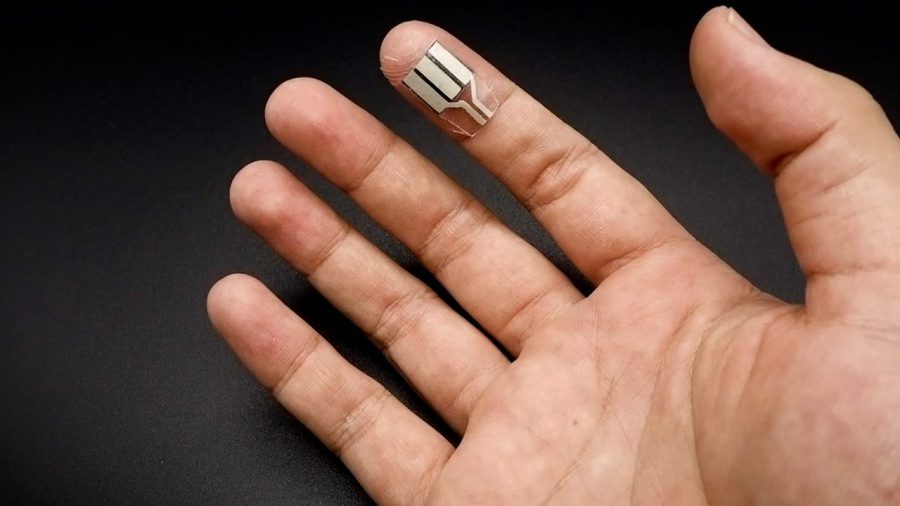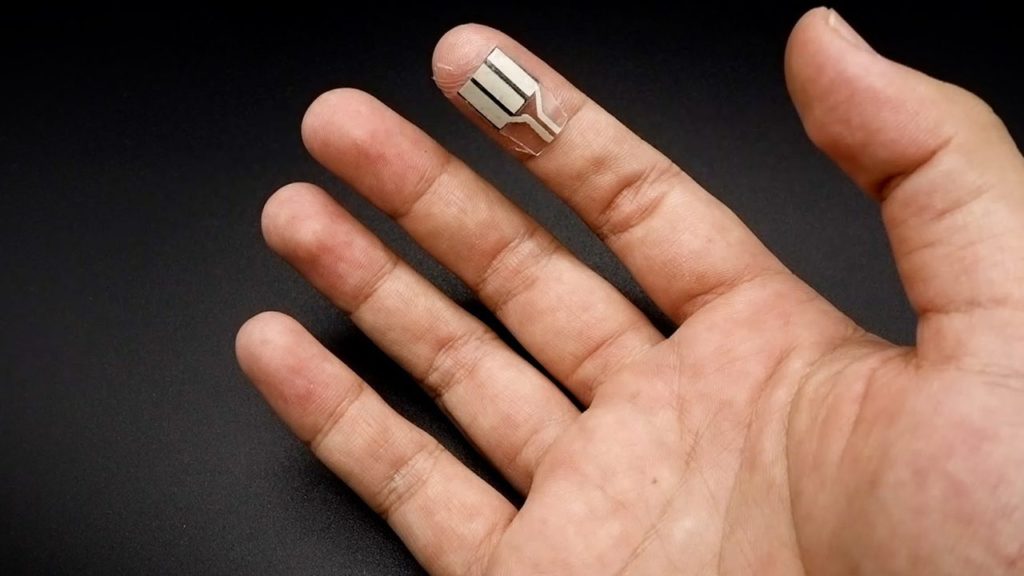
SAN DIEGO — A team at UC San Diego is developing a technology that could generate electricity from the movement of your fingers as you text — or even from your sweat while you sleep.
The wearable device comes as a thin, flexible strip that can be worn in a fashion similar to a Band-Aid. It generates small amounts of electricity when a person presses on something with their finger, or even when the person sweats.
“What’s special about this sweat-fueled device is that it generates power even while the wearer is asleep or sitting still,” a UCSD news release reads. “This is potentially a big deal for the field of wearables because researchers have now figured out how to harness the energy that can be extracted from human sweat even when a person is not moving.”
Researchers described the device as the first of its kind. Co-author Lu Yin, a nanoengineering Ph.D. student at the university’s Jacobs School of Engineering, explained: “Unlike other sweat-powered wearables, this one requires no exercise, no physical input from the wearer in order to be useful. This work is a step forward to making wearables more practical, convenient and accessible for the everyday person.”
The device can further generate power when a person taps on something — making activities like “typing, texting, playing the piano or tapping in Morse code” sources of energy, the school says.
“We envision that this can be used in any daily activity involving touch, things that a person would normally do anyway while at work, at home, while watching TV or eating,” said Joseph Wang, a professor of nanoengineering at the Jacobs School and the study’s senior author. “The goal is that this wearable will naturally work for you and you don’t even have to think about it.”
Deriving energy from sweat might sound unusual, and it might not seem like a person’s finger would generate much, but experts involved in the project described fingertips as “24-hour factories of perspiration.”
“It’s a little-known fact that the fingertips are one of the sweatiest spots on the body; each one is packed with over a thousand sweat glands and can produce between 100 to 1000 times more sweat than most other areas on the body,” the school’s news release reads.
And that sweat is a source of valuable electrical energy.
Within the strips, “a padding of carbon foam electrodes absorbs sweat and converts it into electrical energy. The electrodes are equipped with enzymes that trigger chemical reactions between lactate and oxygen molecules in sweat to generate electricity. Underneath the electrodes is a chip made of what’s called a piezoelectric material, which generates additional electrical energy when pressed,” the team explains.
“As the wearer sweats or presses on the strip, the electrical energy gets stored in a small capacitor and is discharged to other devices when needed.”
If you want to learn more about the project, check out UCSD’s full report on the project and watch the video above.
Suggest a Correction
